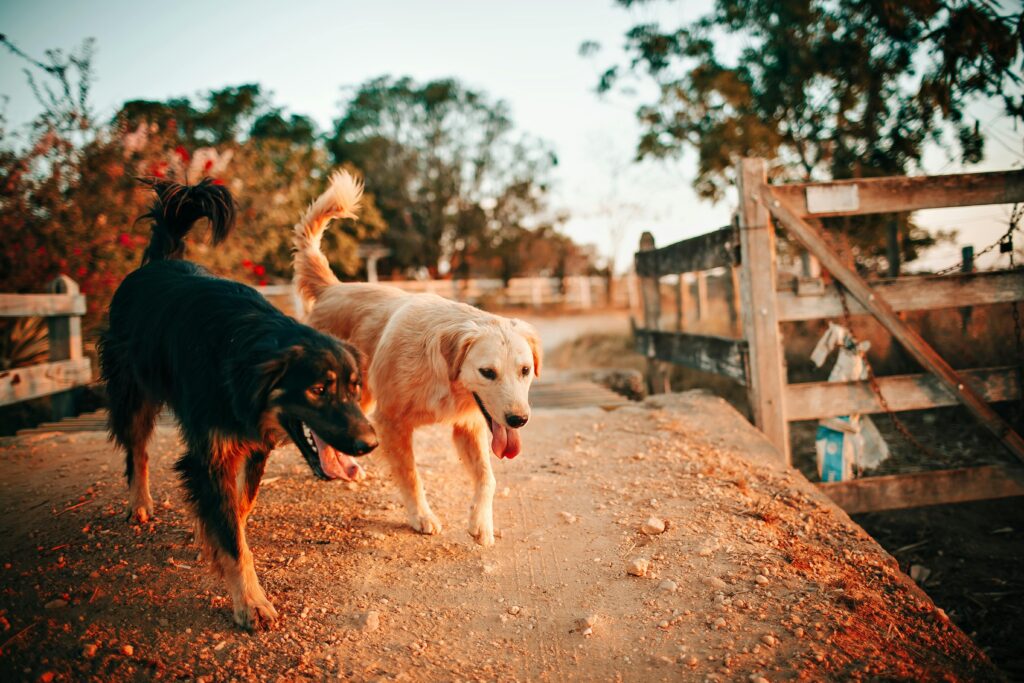Both people and animals can be infected and killed by the deadly Rabies Virus.
You can get it if an infected animal bites you or if you come into contact with their saliva.
All pet owners should understand the Rabies Virus.
What Do We Mean by the Rabies Virus?
- The virus spreads to the nervous system and it results in serious symptoms.
- Usually, it starts with fever and ends for the patient in either paralysis or death.
- The virus is almost always deadly once signs begin to appear.
How the Virus That Causes Rabies Is Spread
- Rabies is most often transmitted by the bites of infected animals.
- If saliva touches a cut or membrane in your eyes, nose or mouth, the disease may spread.
- Rabies Virus is frequently carried by wild animals.
What Are Early Signs That a Pet May Have Rabies?
- When a pet comes down with Rabies , it may seem strange or nervous.
- Signs may be that they stay away from other dogs, act aggressively or drool a lot.
- If you get bitten by an animal, watch for these early symptoms.
Later Stages of Rabies Viral Signs
- Later on, the virus leads to seizures and makes the bones and muscles paralyzed.
- Swallowing difficulties and unfamiliar barking could be a sign your pet is having health problems.
- Rabies infection has reached the final stages when these symptoms appear.
Why Rabies is Such a Serious Health Problem
- Rabies is able to travel rapidly from the spot of the bite to the brain.
- When it affects the brain, no treatment has been found to help.
- As a result, Rabies must be taken very seriously.
The Importance of Vaccination for Preventing Rabies
- A Rabies Virus infection can be prevented best through vaccinations.
- They prepare your pet’s body to challenge the virus ahead of when the illness develops.
- Shots at the proper time stop the spread of Rabies .
When Are Pets Supposed to Get Their Rabies Vaccines?
- Vets recommend that 3-4 months is the right time for your puppy or kitten to receive their first Rabies shot.
- You most likely will need a booster shot every 1-3 years after your initial vaccination.
- Make sure to receive your vaccines on your veterinarian’s schedule to stay safe from Virus.
Can People Get the Rabies?
- People are at risk of being infected with Virus.
- Often, it develops when someone is bitten by a rabid animal.
- A fast response is important if you’ve come into contact with Virus.
Steps to Take After You Might Have Been Exposed to Rabies
- Should you suspect you may have come into contact with Rabies Virus, get help right away.
- After cleaning the wound, go to a doctor immediately.
- Receiving a post-exposure shot early helps stop the Virus.
Preventing Wildlife from Getting Rabies
- Several governments are trying to limit Virus in wild animals.
- They put vaccines in places where animals might eat them or kill animals.
- They help control the risk of Rabies for pets as well as people.
How can Rabies Virus be spotted in wildlife?
- Animals that have Virus usually behave in an unusual manner.
- Owners may observe that their dog has less fear, acts differently during the day or begins to foam.
- Don’t come into contact with any animal that appears to have Rabies.
How the Rabies Virus Affects Worldwide Health
- Thousands of lives are lost every year to Rabies Virus around the world.
- Many cases are found where there are few vaccines available.
- Achieving victory over Rabies Virus depends on united action from countries all over the world.
Rabies virus laws apply to anyone traveling with pets.
In many places, you need to show that you’ve been vaccinated against the Rabies Virus.
When they do not possess it, pets could be prevented from entering the country or required to remain quarantined. Make sure to know the travel laws concerning the Virus.
Rules for Pet Owners Related to Rabies
- Most places follow particular laws regarding Virus shots.
- You may be penalized or even more seriously affected, if you don’t ensure your pets are vaccinated.
- Sticking to the law helps decrease the possibility of a Virus outbreak.
Is the rabies virus a risk for indoor pets?
- Evenso, indoors pets aren’t 100 percent safe from wild animal transmission of Rabies Virus.
- Bats may fly into households and pass the virus along.
- While contamination is declining, vaccination against Rabies Virus is necessary.
Vaccination for Rabies Given After Exposure
- Most people exposed to Virus must receive various doses of the vaccine.
- They intervene to help the body stop the spread of the virus.
- Putting off treatment after a Rabies Virus bite puts a person in grave danger.
What to do After a Pet is Exposed to Rabies
- Should your pet come into contact with the Virus, contact your vet.
- Sometimes, officials might have to give them a booster or put them in quarantine.
- Quickly preventing the Virus keeps it from infecting others.
The Main Rabies Myths
- A lot of individuals think the only place to find the Virus is in strays.
- While dogs are the most likely to get the virus, cats and wildlife can also be infected.
- Knowing the reality helps stop you from getting infected by the Rabies Virus.
Ensuring Communities Have No Risk of Rabies
- Community vaccination efforts play a big role in preventing Rabies Virus infections.
- Governments, shelter staff and pet owners must find common ground.
- Getting education is extremely important to fight the Virus.
- What We Know About Rabies in Shelter Pets
- Rabies Virus must be looked for in the animals at animal shelters.
- A lot of shelters require the pet to be vaccinated before they can adopt it.
- As a result, the spread of the Virus is prevented in many communities.
Rabies is the main subject of this article for Pet Groomers.
- Genuine groomers will want to see the Virus vaccine for your pet.
- It ensures the safety of everyone working there and other pets.
- It helps to prevent the Rabies Virus at their clinic.
What You Should Know about Rabies and Stray Animals
- Someone who has contact with stray animals should know that Rabies Virus is present.
- Don’t feed or touch animals you do not recognize.
- If you notice any unusual pets showing Rabies Virus signs, please contact animal authorities.
Rules to Follow After Coming in Contact with the Virus
- Exposure to Virus might lead to your pet needing to be placed in quarantine.
- The purpose of this is to stop the spread.
- During quarantine, doctors look for signs of Virus before starting treatment.
Bats being a source for the Rabies Virus
- In some regions, bats are the greatest source for transmitting Rabies Virus.
- Many people infected with the virus do not show noticeable symptoms.
- Never handle a bat, inside or outside, because it might have the Virus.
Managing the Local Drift of the Rabies Virus
- Monitoring for Virus infection is done by local health care officials.
- Low-cost vaccination services or events are sometimes offered by them.
- Activities in the community are important for lowering Virus disease rates.
International Actions Taken to Prevent Rabies
- Around the world, the World Health Organization works to fight Rabies.
- They hope to eliminate rabies caused by dogs by the end of 2030.
- Vaccinating as much of the globe as possible can prevent Rabies Virus.
Steps You Should Take to Prevent Rabies
- Pets should stay in the house overnight to avoid coming into contact with carriers of Rabies Virus.
- Remove your food from the area before or during your trip.
- Visiting a vet often helps protect against Virus.
Because relocating wild animals can release Virus, the movement of animals may cause it to spread.
It’s best to call in experts if you have a pest control issue with animals.
When a dog is not trained, there is a greater chance of Virus.
What to Notice for Possible Problems with Rabies
- Virus may be suggested if you observe your pet drooling a lot, limping and behaving aggressively.
- Any remarkable actions by pets or wild animals must be reported.
- Spotting Rabies Virus infection in the early stages can bring outbreaks under control.
Frequently Asked Questions (FAQs)
Are cats at risk of getting the Rabies Virus?
Just like dogs, cats may contract the Rabies Virus.
Having their vaccinations is important for their own safety.
There is still some risk for Rabies Virus for cats kept inside the house.
Out of all animals which ones are the greatest carriers of the Rabies Virus?
In most cases, bats, raccoons, skunks and foxes carry the Rabies Virus.
They are more dangerous than the others.
Keep away from Bats to avoid getting the Rabies Virus.
Can people infected with Rabies always expect to die?
If symptoms develop, Rabies Virus is nearly always a death sentence.
That is why doctors recommend getting vaccinated early and providing treatment quickly.
No treatment exists once Virus symptoms are visible.
How much time can the Rabies Virus live on its own?
in the context of the disease, this virus doesn’t survive outside the body for very long.
Sunlight and dry weather cause the lifespan of it to end fast.
Nevertheless, coming in contact with an animal’s saliva may pass the Rabies Virus.
Will my insurance cover if my pet ends up biting someone?
You will be required to isolate your pet for the Rabies Virus to be checked.
Most locations require that you show proof of recent vaccination.
Stick to all local policies to avoid the threat of Rabies Virus.
Conclusion:
Everyone should understand that Virus is a dangerous disease.
Immunization through vaccination helps save people and protect the whole community.
Good pet ownership practices can control the spread of Virus.
Contact our veterinarian for consultation on WhatsApp















